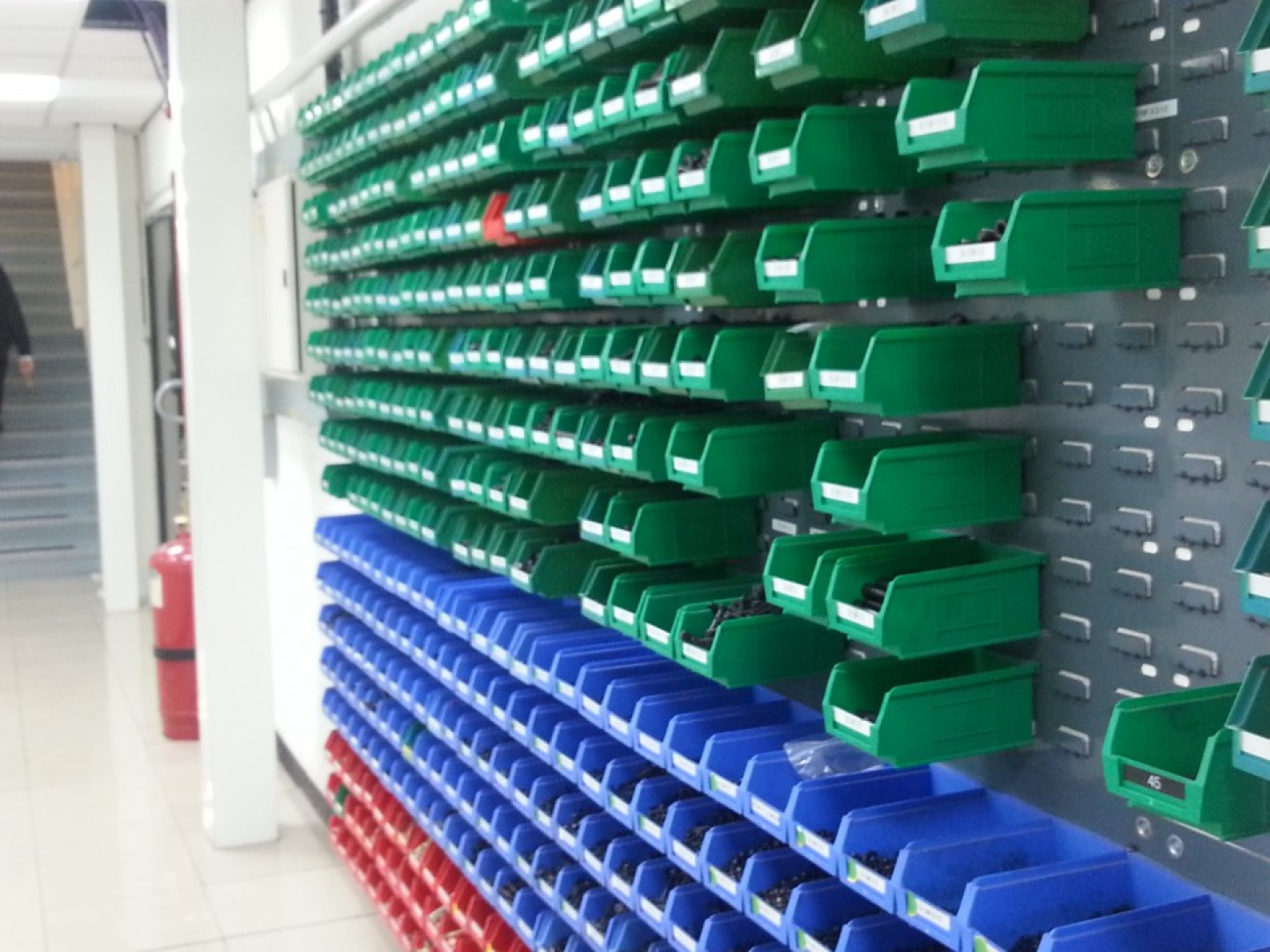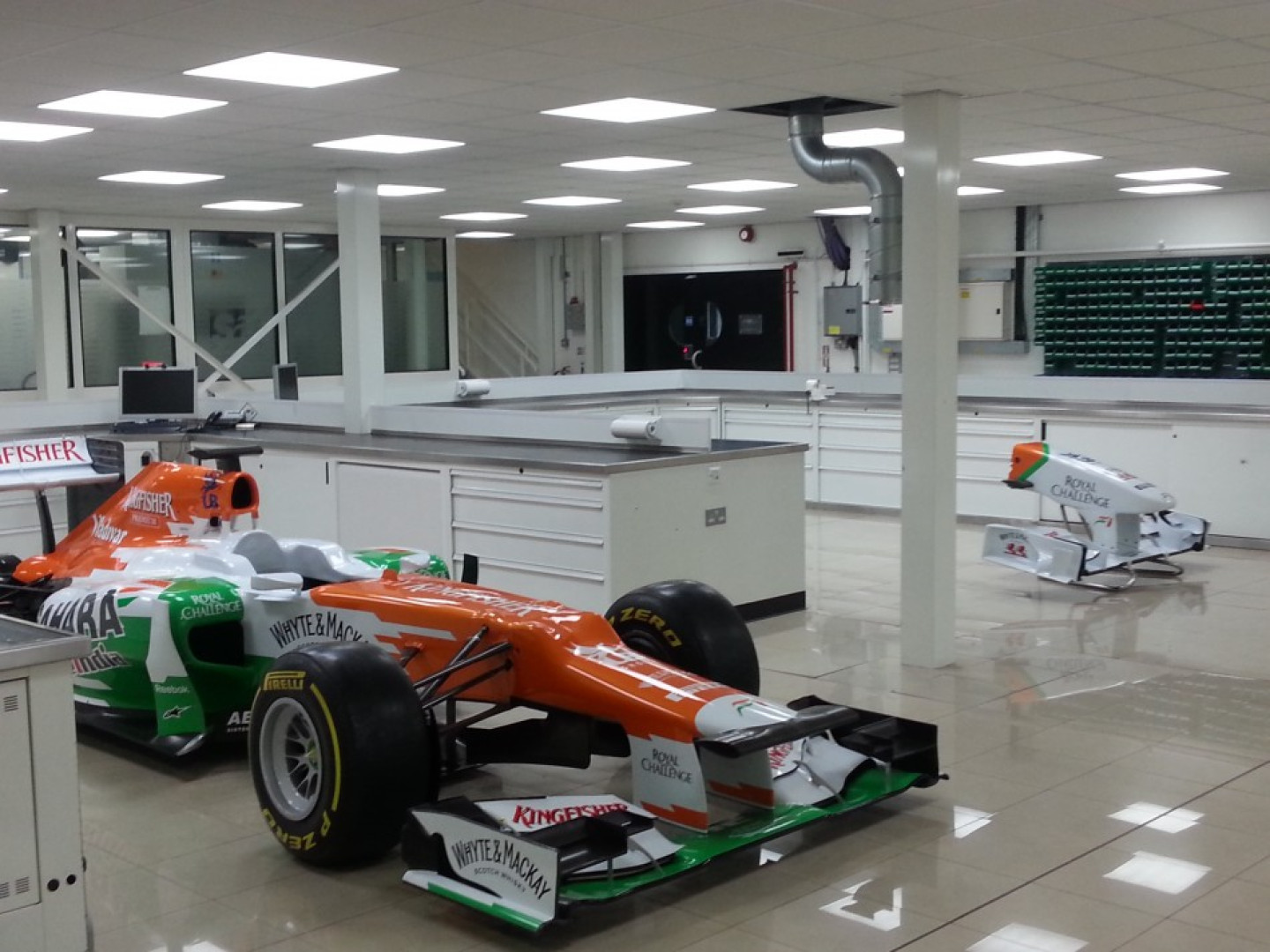The Technology Behind Formula 1
From off-the-shelf laptops to military grade servers, we managed to get a rare behind-the-scenes glimpse at the technology behind a Formula 1 team.

Formula 1 is one of the most glamourous and high-profile sports in the world, with drivers earning all the plaudits and accompanying multi-million pound salaries - but if wasn't for the IT department behind each Formula 1 team, the cars and the drivers would be going nowhere.
Ahead of the British Grand Prix at the weekend, we were invited to take a look behind-the-scenes at the Sahara Force India factory and pit lane garage and speak to the team's IT Director to see just what it takes to get the cars on the track and keep them there.
Sahara Force India are a mid-tier Formula 1 and therefore need to cut their cloth to suit their budget and according to IT director Adrian Collinson, that means being clever with the technology they use, mixing off-the-shelf hardware and so0ftware with specialist military-grade tech.

Three bases
Sahara Force India uses three bases during the season. They, like the majority of F1 teams, are based in the UK, which the company's main factory located right next to the Silverstone race track. It is the same factory which was used by the Jordan F1 team before they folded in 2005.
The second base is a wind tunnel facility in Brackley while the third 'base' is its race team which changes location with each race. This means setting up a mobile data centre for each race and being able to connect effectively with the team back in the home base at Silverstone.

The team uses a relatively meagre 12Mbps connection to transfer data from the race track to the "mission control" room located within the factory. This includes voice traffic and telemetry from the cars themselves. There are dozens of different sensors on each car sending back data such as tyre pressure, temperature and track conditions to analysts at the factory who help shape team decisions during the race.
Indeed, for the majority of races, decisions about pitting, tyre selection and race tactics are carried out by a team based in the factory and not those trackside, though not all teams operate like this.
When asked if it would be possible to transmit the data via satellite, the Force India technical team said it would be possible, and quicker, but the costs would be huge.
All the data coming from the cars needs to be retained and for each race weekend, each car used generates a few gigabytes of data which is stored on a sever at the Silverstone factory, backed up by a server at the Brackley facility, as well as second backup server at another site.

In total Collinson said the team currently has around 300 terabytes of data stored, allowing technicians to check on race set-ups from years ago based on certain weather or track conditions.
The IT team uses a lot of off-the-shelf technology, such as Medion laptops and Microsoft Office software, but in certain cases need to look for more specialist technology, such as its use of Westek data centres at the track.
The Westek equipment used by Sahara Force India has been designed for military use, but Wesktek uses it because it doesn't need additional air conditioning, meaning it costs less to transport, and when you are travelling for almost six months of the year, that can mean a of savings.
Simulator
In order to replicate track conditions and test out which settings will work best in any given condition, Force India, like many other teams, has created a sophisticated simulator which resembles the ultimate video game set-up.
Unfortunately we were unable to take pictures of the simulator to protect sensitive data, but we were shown how it works. The room is split in two, with all adjustments carried out by engineers on a bank of computers on one side, and the hydraulic supported simulator on the other.
Live data from the track is also fed through and once the different settings are made, engineers get to live out their F1 dreams by jumping into the seat and testing out the set-up. We were told that the engineers had become so good at suing the simulator that some were even better than the drivers themselves.

The simulator features an identical set up to the cockpit of a Formula 1 car and three wraparound screens allow the engineer using the simulator to get a real sense of how the track looks and feels.
The software used by Force India has been created by a Canadian company which has scanned every F1 track creating a 3D model, claiming to be accurate to within a millimetre. Another company then scans the track surface in even more detail, meaning the engineers feel every bump and undulation just like the drivers.
The simulator is used mostly on the Friday of a race weekend, when the team is trying to get a car set-up properly for qualifying on a Saturday and the race on a Friday.
© Copyright IBTimes 2025. All rights reserved.






















